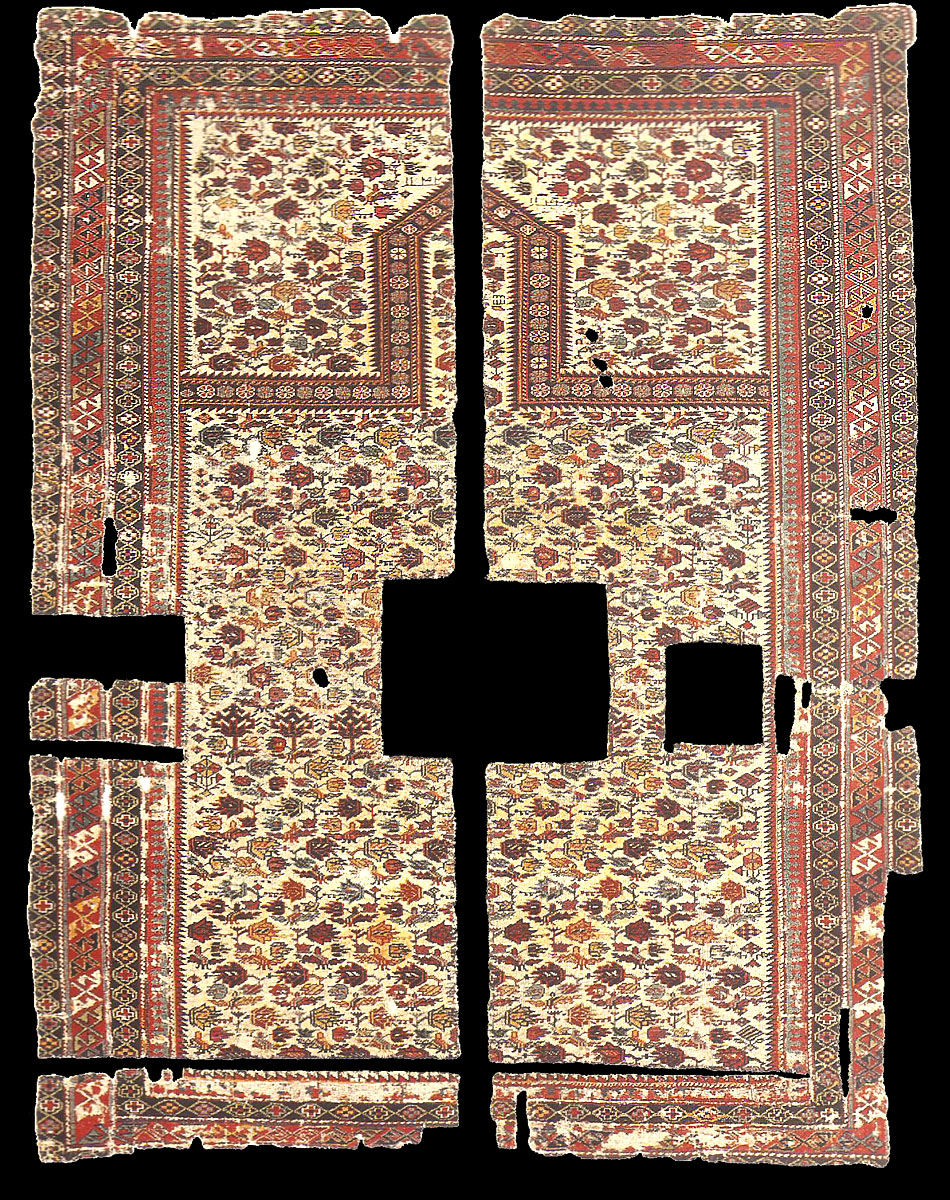|
With its naturalistic flower design, and lack of a geometric lattice
framework, it is quite probable that this piece represents a very early
style of Caucasian prayer rug. Very few rugs of this design now exist. The
rug is extremely finely woven, with 525 knots per square inch, and uses silk
wefting. It is published as plate 8 in The Caucasus: Traditions in Weaving
by James Burns, the owner of the rug, where he calls it 'the most finely
knotted Caucasian weaving I have examined'. Indeed, it is almost twice as
fine as the 'Straka' Marasali (plate 91), which has 287 knots per square
inch.
The tradition of silk wefting and extremely fine knotting endured throughout
the nineteenth century Caucasian weavers continued to produce very fine
white-ground prayer rugs for special commissions. Maury Bynum of Chicago
recently had two such examples, one dated 1854 with cotton weft and silk
warp and one dated 1840 with silk weft, warp and highlights. Plate 7 in
Burns, Traditions in Weaving, illustrates a silk-wefted Shirvan dated AH
1230 (1814) with 324 knots per square inch. Another very fine example, dated
ah 1243 (1827) and with 260 knots per square inch, was sold at Lefevre in
1984. These rugs were special presentation pieces, often intended as gifts
or bridal dowry. The rug, shown here has an interesting recent history:
Offered by Lefevre in its prerestored condition (cut and reduced in length
and width with the remaining sections together), it was assigned to
Daghestan, dated AH 1232 (1817) and sold for little money in 1979 (Lefevre,
10 May 1979, lot 30); after which it was restored. It was then purchased by
a leading London dealer who made the decision to remove the restored
portions and mount the rug as we now see it. Although the restoration was
excellent, it could not compare with the original portions of the piece.
published Ralph Kaffel's Caucasian Prayer rug, plate 93
 |

